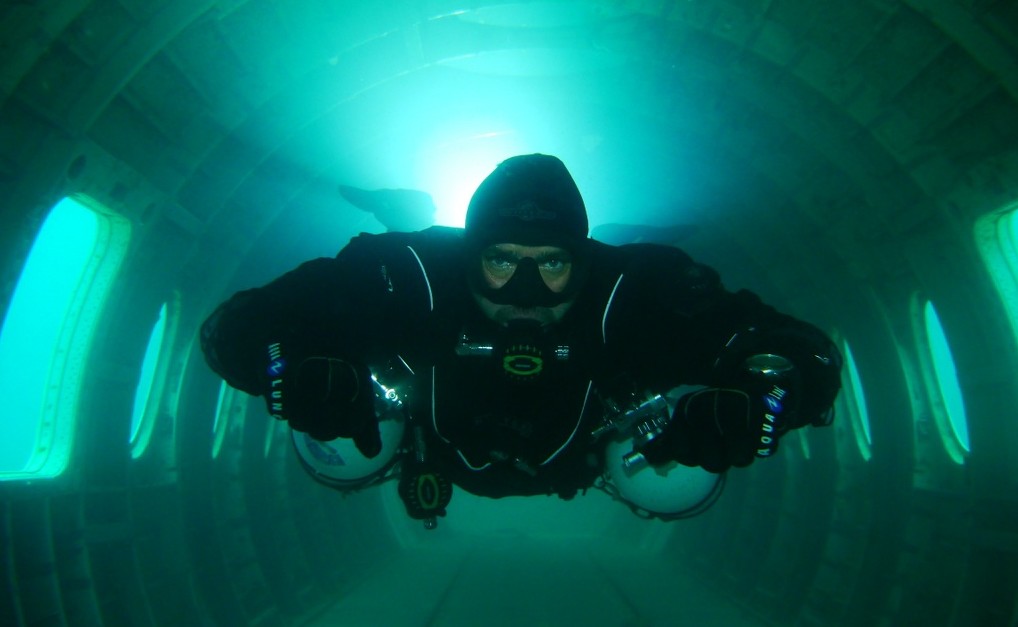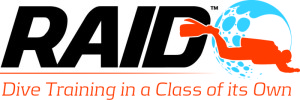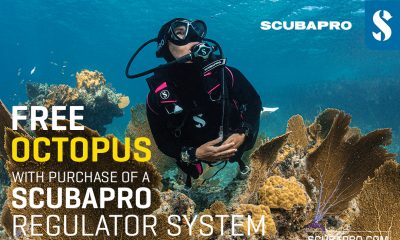News
Sidemount versus Backmount – a constant debate

An increasing proportion of divers are making the transition from recreational to technical diving for a variety of reasons, whether it be to go deeper, to stay down longer, to enter caves, or to dive bucket list wrecks. We all have our own individual diving aspirations and reasons why we love being underwater, so when it comes to choosing equipment, why should it be any different? It is all about personal preference.
People often ask me, what is the secret to relaxed and comfortable scuba diving? My answer is always the same – it has to be using the most suitable equipment for your specific dive that meets your individual needs and requirements. This is especially true when it comes to technical diving, as with increasing equipment load and task loading it becomes all the more important to ensure that you are only carrying necessary equipment which is streamlined and you are confident in using.
I dive backmount, sidemount, multistage and CCR configurations; of course, I make it no secret that sidemount is my preference, whether I’m in caves or open water. For me, it’s about taking the weight off my back in any environment. For some, having the weight on their back causes no issues, so then you have to decide what works for you, both in and out of the water in different environments.
This is where training comes in. At the end of the day there’s no substitute for experience – both an instructor’s and your own. By all means talk to people, follow forums, but ultimately there’s no vetting process for who can make comment, so whose opinion can you really trust? The obvious answer is you have to make your own opinion and the best way to do this is to give the equipment a try, but under the supervision of an experienced and reputable instructor. Most full-time technical instructors will have spent 1000s of hours underwater and many of these will have been spent perfecting their equipment, so why not make use of that experience? Skip the awkward errors and time spent analysing how the harness should fit, where the weights should go, what length regulator hoses, which D-rings to use and where – Just skip to the good bit of diving and deciding if you like how something feels. Ultimately, diving is all about feeling relaxed, not stressful or uncomfortable.
So, what’s the right equipment for the right situation? Carrying excess equipment for a dive, eg. 6 cylinders for a 1 hr dive at 10m, is just adding extra stress and strain for no reason. However, the big debate comes in when discussing sidemount outside of cave diving. People still view sidemount as just a tool to squeeze through restrictions by removing cylinders, but sidemount has a lot more to offer than this. When it comes to diving safely in open water, especially at depths or overhead environments, it’s important to access your valves easily in the event of a gas problem. Some people struggle to access their valves in a twinset, whereas in sidemount, valves are always easily accessible and visible. Taking weight off your back and carrying cylinders separately on the surface is an advantage for those who suffer with back pain or struggle to carry weight. Conversely, if you have no physical issues, then backmount could be right for you. Ultimately, it’s about approaching the decision with an open-mind and recognising that both configurations will give you redundancy – it’s just about what you feel best and most confident in.
There has been much discussion around the difficulties of using sidemount on a boat or effectively staging multiple cylinders for deep dives, but it has to be said that these issues apply equally to backmount and ultimately it just comes down to training from an experienced instructor. Open water sidemount is the relatively new kid on the block in comparison to twinset diving, so unfortunately people are still experimenting, and as a result, getting it wrong. My experience has been that although most boats are fitted out with backmount divers in mind, a well-trained sidemount diver has much greater flexibility towards kitting up, i.e. sitting on a bench, standing up, kneeling on the dive deck, straddling the tube of a RHIB or donning/doffing in the water. There’s no denying the fact that there are pros and cons for each configuration, but it really comes down to how you feel in the water, and with adequate training you’ll learn how to make your life easier and overcome any issues. It’s all about technique, and with the right technique even the smaller, more petite divers, can readily handle multiple cylinders in a variety of situations.
Overall, if you are considering that transition from single cylinder to dual cylinders and perhaps beyond, my ultimate piece of advice would be, don’t listen to all of the talk and the hype about different configurations, but instead go out and give them a try yourself. Spend your time/research finding a reputable instructor who can give you the best taste of the different equipment – you’ll soon know what suits you best and you’ll love your diving all the more for it!
If you are interested in further training or you want to know more about RAID don’t hesitate to contact me.
 Garry is the owner of Simply Sidemount (www.simplysidemount.com) and a Director of training agency RAID UK & Malta (www.diveRAID.com). To contact Garry email garry@simplysidemount.com or visit his Facebook page: Simply Sidemount & Simply Tec
Garry is the owner of Simply Sidemount (www.simplysidemount.com) and a Director of training agency RAID UK & Malta (www.diveRAID.com). To contact Garry email garry@simplysidemount.com or visit his Facebook page: Simply Sidemount & Simply Tec
Blogs
The Ocean Cleanup Breaks 10,000,000 KG Barrier

The Ocean Cleanup, the global non-profit project, has removed a verified all-time total of ten million kilograms (22 million lbs.) of trash from oceans and rivers around the world – approximately the same weight as the Eiffel Tower.
To complete its mission of ridding the oceans of plastic, The Ocean Cleanup uses a dual strategy: cleaning up the Great Pacific Garbage Patch (GPGP) to remove the plastic already afloat in the oceans, while stopping the flow of plastic from the world’s most polluting rivers.
Through cleaning operations in the GPGP and in rivers in eight countries, the cumulative total of trash removed has now surpassed ten million kilograms. This milestone demonstrates the acceleration of The Ocean Cleanup’s impact, while underlining the astonishing scale of the plastic pollution problem and the need for continued support and action.
While encouraging for the mission, this milestone is only a staging point: millions more tons of plastic still pollute our oceans and The Ocean Cleanup intends to continue learning, improving and innovating to solve this global catastrophe.
This announcement comes as governments from around the world meet to continue negotiations to develop a new legally binding instrument to end plastic pollution at INC4 in Ottawa, Canada. Representatives of The Ocean Cleanup will be in attendance and the organization will be urging decision-makers to collaborate towards a comprehensive and ambitious global treaty which addresses plastic at all stages of its life cycle and in all marine environments worldwide, including in areas beyond national jurisdiction.
It is encouraging to see that the need for remediation is reflected in the various options for potential treaty provisions. It is essential that the final treaty contains clear targets for the remediation of legacy plastic pollution, and reduction of riverine plastic emissions.
Tackling plastic pollution requires innovative and impactful solutions. The treaty should therefore incentivize the innovation ecosystem by fostering innovations that make maximal use of data, technology and scientific knowledge – such as those designed and deployed by The Ocean Cleanup.
‘After many tough years of trial and error, it’s amazing to see our work is starting to pay off – and I am proud of the team who has brought us to this point.’ said Boyan Slat, Founder and CEO of The Ocean Cleanup. ‘While we still have a long way to go, our recent successes fill us with renewed confidence that the oceans can be cleaned.’
The Ocean Cleanup was founded in 2013 and captured its first plastic in 2019, with the first confirmed catch in the GPGP coming soon after the deployment of Interceptor 001 in Jakarta, Indonesia. After surpassing one million kilograms of trash removed in early 2022, the non-profit project has since progressed to the third iteration of its GPGP cleaning solution, known as System 03, and a network of Interceptors currently covering rivers in eight countries, with more deployments set for 2024.
About The Ocean Cleanup
The Ocean Cleanup is an international non-profit organization that develops and scales technologies to rid the world’s oceans of plastic. They aim to achieve this goal through a dual strategy: stemming the inflow via rivers and cleaning up the legacy plastic that has already accumulated in the ocean. For the latter, The Ocean Cleanup develops large-scale systems to efficiently concentrate the plastic for periodic removal. This plastic is tracked and traced through DNV’s chain of custody model to certify claims of origin when recycling it into new products. To curb the tide via rivers, The Ocean Cleanup has developed Interceptor™ solutions to halt and extract riverine plastic before it reaches the ocean. Founded in 2013 by Boyan Slat, The Ocean Cleanup now employs a broadly multi-disciplined team of approximately 140. The foundation is headquartered in Rotterdam, the Netherlands.
For more information, visit: theoceancleanup.com and follow @theoceancleanup on social media.
Marine Life & Conservation
Steve Backshall to headline Shark Trust’s flagship event: For the Love of Sharks

Join a host of amazing, shark loving, speakers including Steve Backshall and the Shark Trust team for an evening celebrating shark conservation at the Royal Geographical Society in London this November.
Date: 29th November 2024
Time: 6-10pm
Location: Royal Geographical Society, London
Tickets: https://www.sharktrust.org/Event/flos24
The event will be a celebration of all things shark. Those lucky enough to get hold of tickets will hear from engaging guest speakers with a passion for sharks.
The line-up includes (*subject to change if unforeseen circumstances arise)
Steve Backshall: One of television’s busiest presenters, BAFTA award-winning wildlife expert Steve has been passionate about the wild world ever since he was young.
Steve’s impressive TV career has taken him all around the world, investigating a wide array of species and environments. Steve has filmed over 100 hours of children’s wildlife programmes with the BAFTA award winning Deadly 60 franchise and recently, with Sky Nature, for his new series ‘Whale with Steve Backshall’. He has been a patron for the Shark Trust for 10 years.
Simon Rogerson: is a photojournalist specialising in natural history, diving and the sea.
He is editor of SCUBA magazine, the official journal of the British Sub-Aqua Club. Simon started his career as a crime reporter but gravitated towards his ‘less depressing’ interest in underwater exploration, joining the staff of DIVE magazine in 1999. In 2005 he was named ‘Editor of the Year’ in the PPA’s Independent Publishing Awards. Simon also works as a freelance writer, contributing frequently to the Sunday Times and Telegraph, in addition to BBC Wildlife, Esquire, and a host of international diving magazines. He is the author of a book, Dive Red Sea, published by Ultimate Sports. Now based in Berkshire, Simon has been a Patron of the Shark Trust for 20 years.
More speakers to be announced soon. Head to the Shark Trust website to learn more.
The evening will also allow guests the final chance to see the Oceanic 31, shark art exhibition. Some of the artwork will be auctioned/raffled at the event, while the rest will be auctioned online to raise money for the Shark Trust Oceanic Programme.
For the Love of Sharks is an evening with something for everyone who is interested and fascinated by sharks. Join the Shark Trust, their Patrons, Trustees and Staff, along with a host of supporters for this celebration of shark conservation.
For more information or to buy a ticket: https://www.sharktrust.org/Event/flos24
-

 News3 months ago
News3 months agoHone your underwater photography skills with Alphamarine Photography at Red Sea Diving Safari in March
-

 News3 months ago
News3 months agoCapturing Critters in Lembeh Underwater Photography Workshop 2024: Event Roundup
-

 Marine Life & Conservation Blogs3 months ago
Marine Life & Conservation Blogs3 months agoCreature Feature: Swell Sharks
-

 Blogs2 months ago
Blogs2 months agoMurex Resorts: Passport to Paradise!
-

 Blogs2 months ago
Blogs2 months agoDiver Discovering Whale Skeletons Beneath Ice Judged World’s Best Underwater Photograph
-

 Gear Reviews3 weeks ago
Gear Reviews3 weeks agoGEAR REVIEW – Revolutionising Diving Comfort: The Sharkskin T2 Chillproof Suit
-

 Gear Reviews3 months ago
Gear Reviews3 months agoGear Review: Oceanic+ Dive Housing for iPhone
-

 Marine Life & Conservation2 months ago
Marine Life & Conservation2 months agoSave the Manatee Club launches brand new webcams at Silver Springs State Park, Florida

















